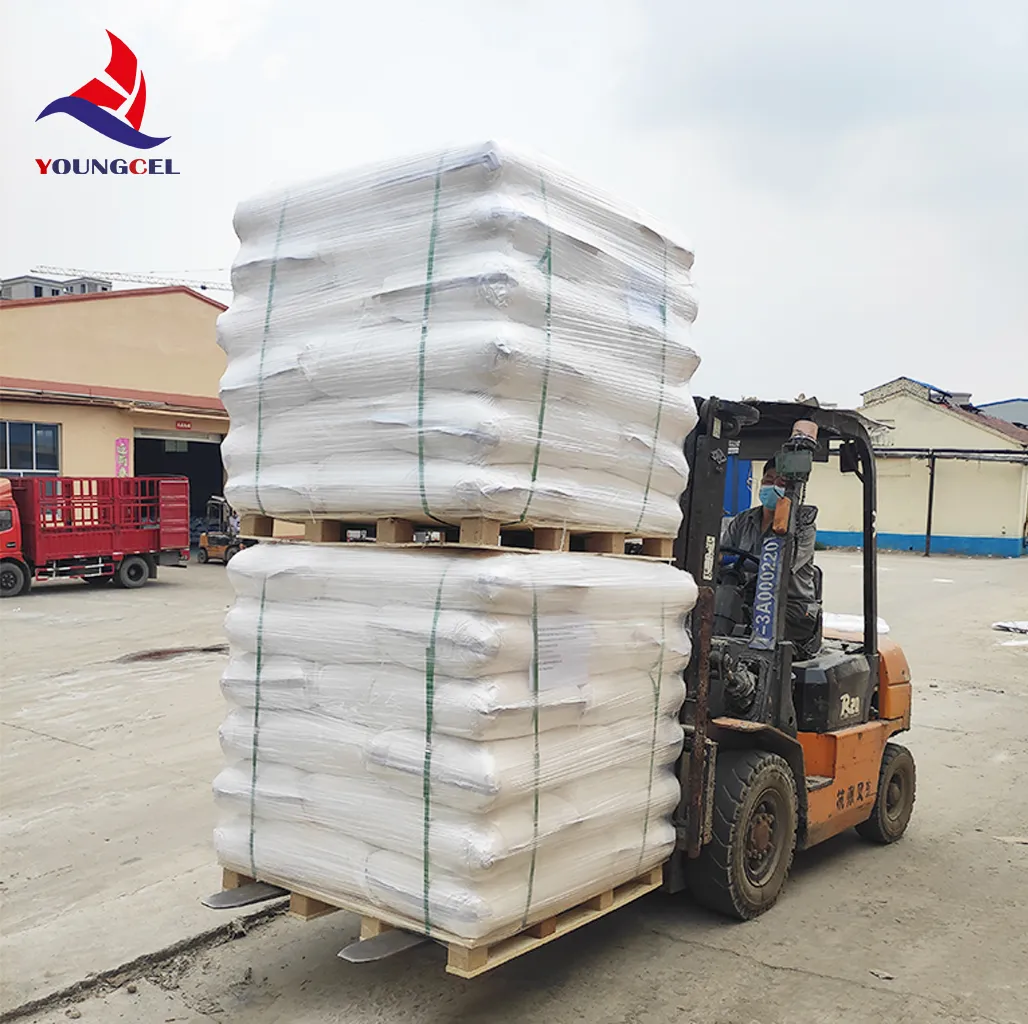Understanding Cellulose Ether HPMC and Its Applications
Hydroxypropyl Methylcellulose (HPMC) is a modified cellulose derivative that has gained significant attention in various industries due to its unique properties and versatile applications. Cellulose, a natural polymer abundant in plant cell walls, forms the backbone of HPMC, making it a biodegradable and environmentally friendly material. This article delves into the characteristics, manufacturing process, and diverse applications of HPMC.
Properties of HPMC
HPMC is a white, odorless powder that is soluble in cold water but not in organic solvents. It possesses excellent film-forming capabilities, thickening and emulsifying properties, and a high degree of water retention. These characteristics are largely attributed to the hydroxypropyl and methyl groups that replace hydroxyl groups in the cellulose molecule, which enhance its solubility and stability in various pH environments and temperatures.
The viscosity of HPMC solutions can be tailored by adjusting the molecular weight and the degree of substitution, making it suitable for a wide range of applications. Moreover, HPMC is non-ionic, which means it does not interact with ionic substances, making it advantageous in formulations where ionic interactions might be problematic.
Manufacturing Process
The manufacturing of HPMC typically involves the alkaline etherification of cellulose. First, cellulose is derived from wood pulp or cotton. This cellulose is then treated with propylene oxide and methyl chloride in a controlled environment to introduce hydroxypropyl and methyl groups. The specific ratios of these modifications determine the final properties of HPMC. After the reaction, the product is washed and dried to obtain a fine powder.
Quality control is vital during this process to ensure that the HPMC produced meets the required specifications for various applications. Parameters such as viscosity, degree of substitution, and moisture content are carefully monitored.
Applications of HPMC
cellulos ether hpmc

HPMC is widely used across numerous industries, each capitalizing on its specific properties.
1. Pharmaceuticals In the pharmaceutical industry, HPMC is commonly used as a binder in tablet formulations, a film coating agent, and a controlled-release excipient. Its ability to form gels and retain moisture makes it ideal for developing sustained-release drug formulations.
2. Food Industry HPMC is utilized as a food additive for its thickening, stabilizing, and emulsifying properties. It serves as a fat replacer in low-fat food products and improves the texture and mouthfeel of various food items. Additionally, it is employed in gluten-free products to enhance dough elasticity.
3. Construction In the construction sector, HPMC is used in cement-based materials such as tile adhesives and plaster. It improves workability, water retention, and enhances adhesion, making it a valuable additive in construction and building materials.
4. Personal Care Products The cosmetic industry makes use of HPMC in various formulations, including lotions, creams, and shampoos. Its thickening abilities enhance product viscosity, while its film-forming properties improve the sensory attributes of personal care items.
5. Paints and Coatings HPMC is employed in the paint and coatings industry as a thickener and stabilizer. It helps control the flow and leveling properties, ensuring a smooth finish upon application. Additionally, it imparts brushability and prevents sedimentation of pigment particles.
Conclusion
Hydroxypropyl Methylcellulose (HPMC) stands out as a multifunctional ingredient with a broad spectrum of applications across different sectors. Its unique properties, combined with its biodegradable nature, make it a favorable choice for manufacturers aiming for sustainability without compromising on quality. As industries continue to seek innovative solutions and environmentally friendly alternatives, the importance and usage of HPMC are likely to expand further, solidifying its position as a vital material in modern formulations. Identifying new applications and improving its properties will continue to be an area of interest for researchers and manufacturers alike.
-
The Application and Significance of Construction RdpNewsMay.19,2025
-
Industrial Grade HpmcNewsMay.19,2025
-
Building Coating Adhesive Building Coating Adhesive HpmcNewsMay.19,2025
-
Application Of Hpmc For Detergent For Detergent In DetergentsNewsMay.19,2025
-
Application Of Hpmc Cellulose In Cement-Based MaterialsNewsMay.19,2025
-
Application Of High Quality Hpmc For Construction In The Field Of ConstructionNewsMay.19,2025




